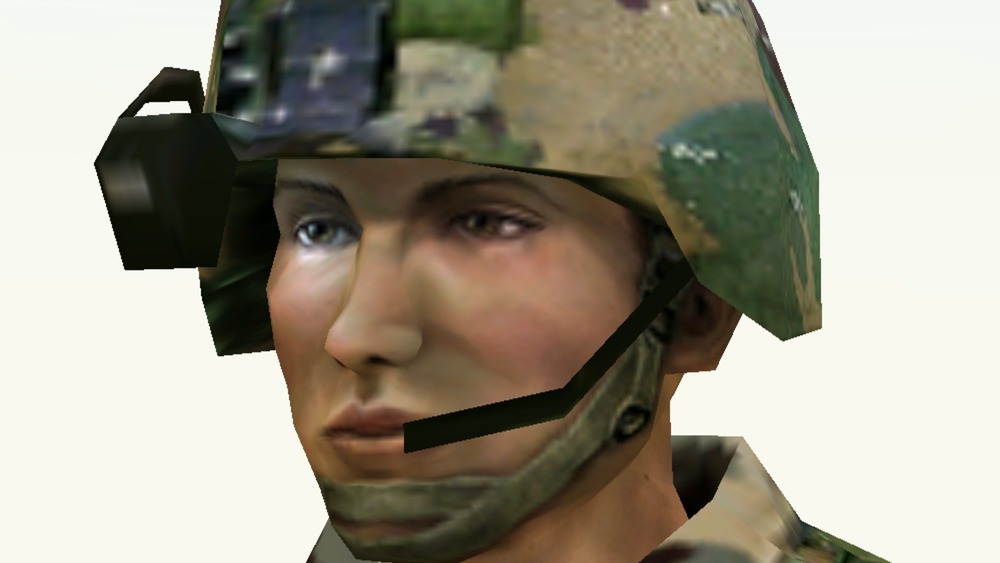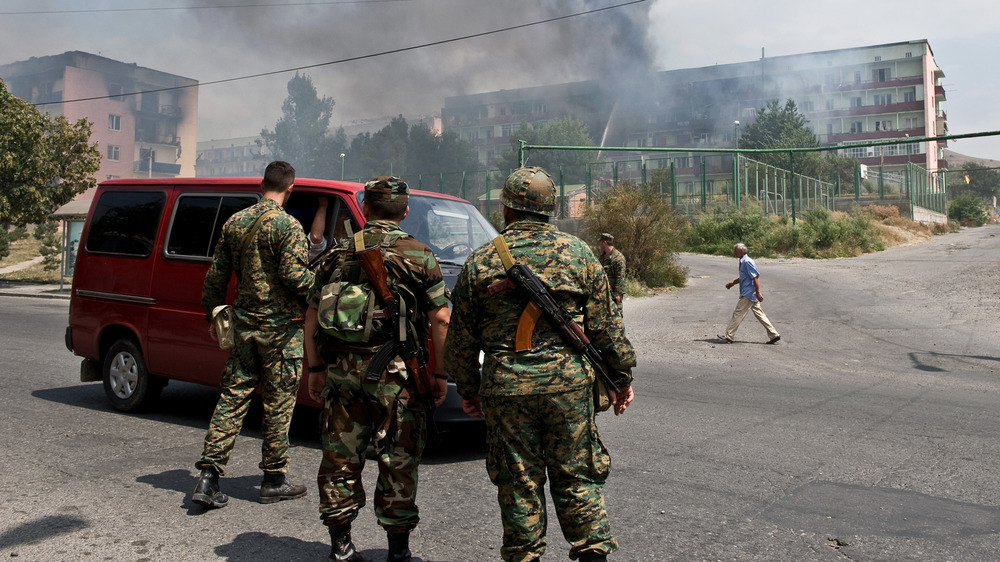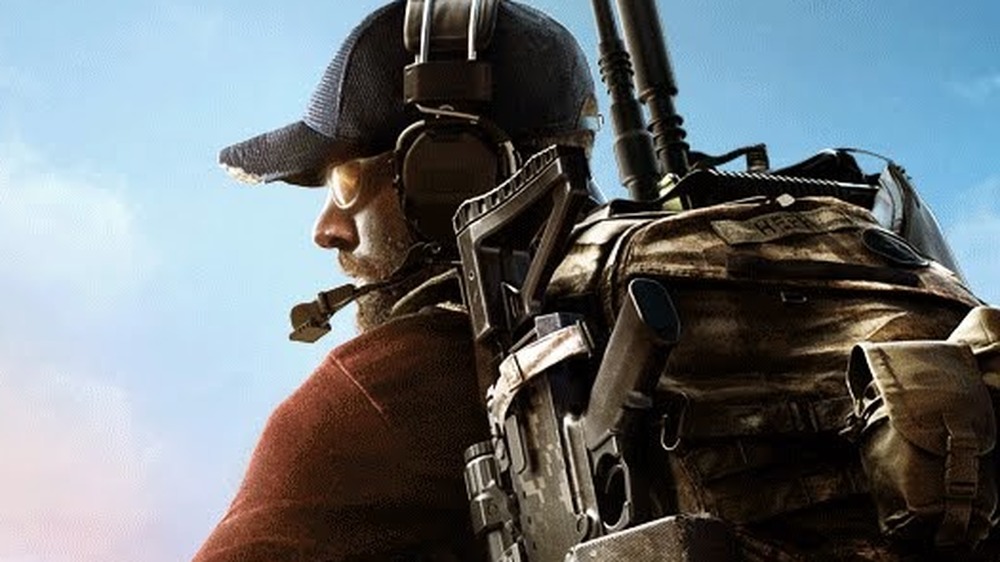How The Original Ghost Recon Actually Predicted The Future
Sometimes, the video games we know and love get their story and plot right. Freakishly right. Longtime fans of Tom Clancy's original Ghost Recon know this better than perhaps anyone else.
Set in the then-near-future of 2008, Ghost Recon's story involves a group of ultranationalists seizing power in Russia. They want to restore the Soviet Union to its former glory by retaking its former republics in Eastern Europe and Central Asia. Their next target is the small country of Georgia. This is the plot of Tom Clancy's Ghost Recon, released on PC in 2001, the game that launched the series. On its face, it's a pretty exhausted narrative — even 20 years ago — about the Russians attempting global domination ... except for one thing: The part about Georgia kind of became a reality.
The Russo-Georgian War was a real-world conflict that happened in August 2008 in the Caucasus region, when tensions between the Georgian government and the ethnic Ossetians who live near the Russian border boiled over. Hundreds (possibly more) died in the monthlong conflict, according to various official sources and NGOs reporting on the events. Russian forces continue to occupy parts of the internationally recognized Georgian borders today.
Tom Clancy games often reflect historical events
The Russo-Georgian conflict was familiar territory for military novelist Tom Clancy, the late author and Marine Corps vet who now has more video game titles than book titles to his name brand. In addition to his books, the author also co-founded video game developer Red Storm Entertainment in the '90s.
Red Storm Entertainment, later acquired by Ubisoft, would produce 1998's Tom Clancy's Rainbow Six, the first game to use the author's name. Rainbow Six and the original Ghost Recon are both credited with helping define the realism of the tactical shooter genre, IGN wrote in 2001.
Cold War paranoia was a dominant theme in the original Ghost Recon and in many of Clancy's books, even years after the Soviet Union dissolved. But the story of the "ghosts" isn't too far-fetched. Its fictional plot is loosely based on historical events, up to a point, and begins with a striking similarity to the real-world conflict.
Why did Russia invade Georgia anyway?
To get the whole picture of the original Ghost Recon story and the real-world conflict, we have to go back about a century to the early days of the Russian revolution. After the Red Army invaded Georgia and incorporated it into the Soviet Union, it created a small autonomous region in Georgia that belonged to the ethnic Ossetians, the South Ossetian Autonomous Oblast. Though autonomous, the region was within Georgia's borders.
Georgia has traditionally preferred independence from Russia, but the Ossetians have been unwilling to follow them, either preferring their own independence from Georgia or support from Russia instead. Their political differences came to a head in the early '90s during the Georgian-Ossetian conflict, which lasted a year and a half and ended with more than 2,000 casualties in 1992, according to The Independent, after a Russian-brokered ceasefire. Political tensions between the Georgians and the Ossetians boiled over again in the 2000s, and in 2008 and, just like in Tom Clancy's Ghost Recon, the Russians invaded on behalf of South Ossetia. (Here's a good timeline of the conflict from CNN.)
Oh, and there's an oil pipeline in the area.
The Russo-Georgian War was an easy prediction
It's unclear how close Clancy worked with Red Storm Entertainment during the original Ghost Recon's development, or any of his namesake games for that matter, but he was still actively writing books up until 2003. His stories usually focus on conflicts based on real-world history, so the Russian invasion of Georgia in 2008 isn't really such a wild prediction if you know your history of the Caucasus region, and Clancy did.
However, the similarities between Tom Clancy's Ghost Recon and the Russo-Georgian conflict end shortly into the game's first act, eventually moving on to the Baltic states and then to Moscow, where the game concludes. Russia never annexed Georgia in 2008, and there was never any U.S. military involvement. There are other instances of Clancy's stories nearly predicting the future, though.
The original Ghost Recon ultimately generated three expansions through 2004 and launched a successful series that's going 20 years strong, despite the disappointment over its most recent installment, Ghost Recon: Breakpoint. Hopefully our future includes a better game and not another real-world conflict.




